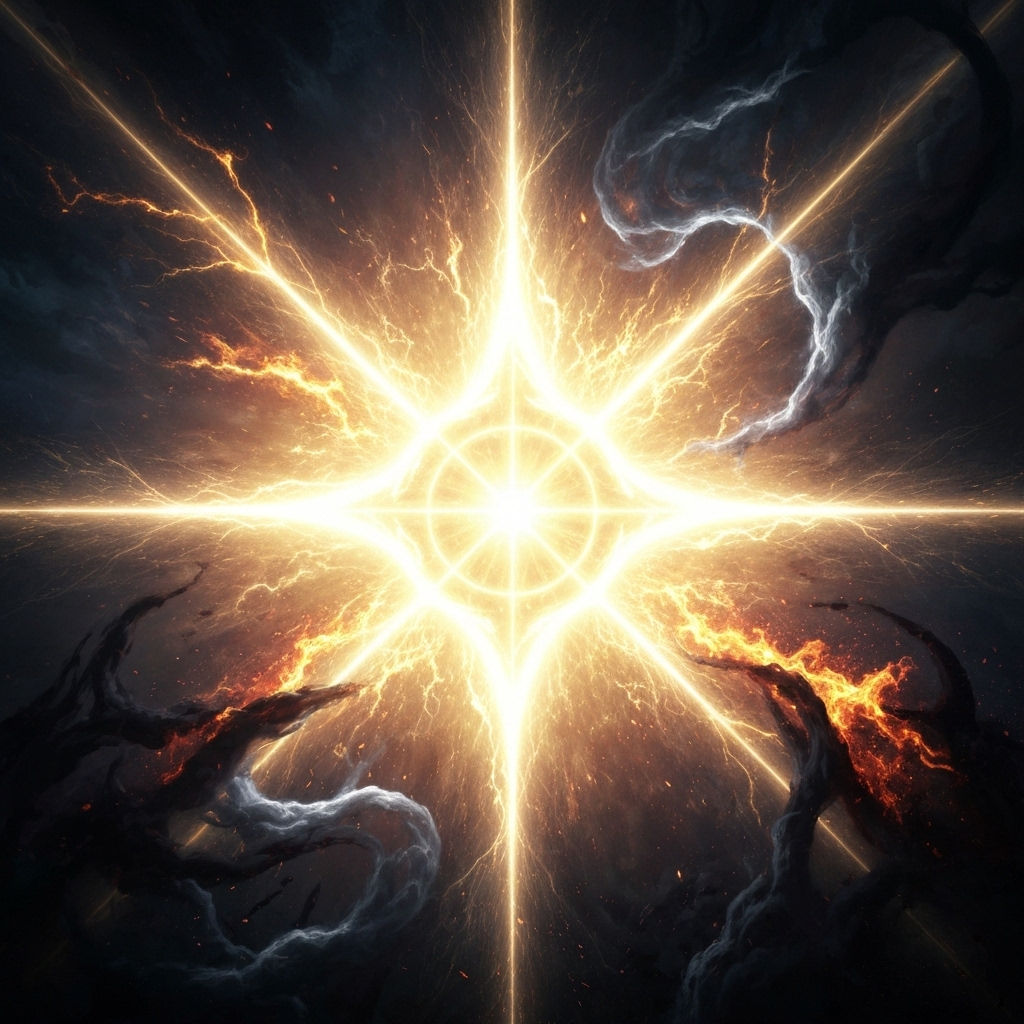
Navratri and Dussehra are not just vibrant festivals filled with dance, music, and celebration; they are profound spiritual journeys that hold deep meaning for seekers on the Vedic path. Together, they represent a powerful 10-day period symbolizing the eternal battle between good and evil, the purification of the self, and the ultimate victory of dharma (righteousness).
Navratri: The Nine-Night Battle Within
Navratri, which literally means "nine nights," is dedicated to the worship of the Goddess Durga in her nine forms. This festival is a celebration of the divine feminine energy, or Shakti, which is the creative force of the universe.
Spiritually, the story of Durga's battle with the demon Mahishasura is an allegory for our own inner struggles.
- Mahishasura, the Demon King: He represents our ego, our negative tendencies (asuras), and the illusions (maya) that bind us. He is powerful, shape-shifting, and difficult to defeat, just like our own deep-seated conditionings.
- Goddess Durga: She is the divine, enlightened consciousness within us. She is the fierce compassion and unwavering strength needed to confront and overcome our inner demons.
- The Nine Nights: Each night represents a stage in our spiritual sadhana (practice). We invoke different forms of the Goddess to help us destroy specific negative qualities.
The nine nights are often grouped into three sets of three:
- First Three Days (Goddess Durga/Kali): Focused on destruction. This is the time to identify and root out our impurities—anger, greed, pride, and jealousy. We call upon the fierce aspect of the divine to destroy these inner obstacles.
- Next Three Days (Goddess Lakshmi): Focused on spiritual wealth. After clearing out the negative, we create space to cultivate positive qualities—compassion, devotion, peace, and contentment. Lakshmi represents not just material wealth, but spiritual abundance.
- Final Three Days (Goddess Saraswati): Focused on wisdom. With a purified mind and a heart full of positive virtues, we are now ready to receive the highest spiritual knowledge (jnana). Saraswati is the goddess of wisdom, music, and art, representing the enlightenment and self-realization that is the ultimate goal.
Dussehra: The Victory of Light
The tenth day is called Vijayadashami or Dussehra. It marks the culmination of this spiritual battle. On this day, two major victories are celebrated:
- Goddess Durga's Victory over Mahishasura: This signifies the triumph of our divine nature over our egoic self. It is the moment of liberation when the inner demons are finally vanquished.
- Lord Rama's Victory over Ravana: As told in the epic Ramayana, Lord Rama, an incarnation of Vishnu, defeats the ten-headed demon king Ravana. Ravana's ten heads represent the ten major vices or negative qualities that plague humanity. His defeat is a powerful symbol of the victory of dharma over adharma (unrighteousness).
The Deeper Spiritual Message
The cycle of Navratri and Dussehra teaches us a timeless spiritual lesson:
- The Battle is Within: The real demons are not external forces, but our own negative patterns of thought and behavior.
- Self-Purification is Essential: Spiritual progress requires a conscious effort to remove impurities and cultivate virtues. It's a step-by-step process that requires patience and perseverance.
- Victory is Inevitable: When we align ourselves with dharma and invoke the divine power within, the victory of our higher self is assured.
This festive period is a reminder to turn inward, to fight our own inner battles with courage, and to celebrate the ultimate triumph of light, truth, and righteousness in our lives.